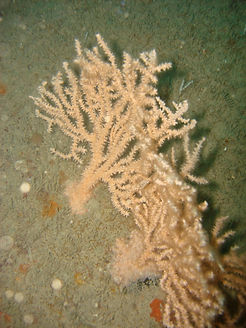RESEARCH PROJECTS

Heritability of growth
Whole genome sequencing
Population genetics

Genetic structure
Fisheries management
Adriatic Sea
Genetic diversity
Genomics
Maerl bed connectivity

Population genetics
Genomics
Sea temperature adaptation

EUROPEAN LOBSTER (HOMARUS GAMMARUS)

HERITABILITY OF GROWTH
Aim: Determine the molecular mechanisms underpinning growth in European lobster
A previous project, Lobster Grower 2, found that lobsters cultured at sea grow at different rates despite being exposed to almost identical environmental conditions. I have taken tissue samples from these animals and are using a combination of whole genome sequencing, RAD sequencing and methylation sequencing to explore the genetic and epigenetic drivers of growth.

POPULATION GENETICS
Aim: Explore the population genetics of European lobster using SNP markers
1. I developed single nucleotide polymorphisms (SNPs) and used these markers to genotype lobsters from across the range of the European lobster during my PhD. The figure above shows the genetic structure of the sites sampled using 79 SNPs; the data were published in Conservation Genetics Resources (2018) and Evolutionary Applications (2019).
2. The same SNP markers were recently utilised to test whether lobsters translocated from Atlantic France to Mediterranean Corsica during the 1970s survived and reproduced. The results indicate that some must have survived and that their descendants now compose a portion of the Corsican lobster population. This study is in review in the journal Ecology and Evolution.
NORWAY LOBSTER (NEPHROPS NORVEGICUS)
Aim:
Test whether Norway lobster populations in the Pomo Pit area are genetically different from neighbouring populations in the Adriatic Sea.
MAERL
MAERL WHOLE GENOME GENOTYPING
Aim: Investigate genome-wide genetic diversity in a maerl species
Samples of Phymatolithon calcareum from maerl beds across the northeast Atlantic have been collected or provided by collaborators and a whole genome genotyping approach is being employed to explore genome-wide genetic diversity for the first time in this species.
This study has been funded by a British Ecological Society Small Research Grant. Photo credit: Mark Milburn.

PINK SEA FAN (EUNICELLA VERRUCOSA)
Aim: Investigate population genetics, marine connectivity and adaptation in pink sea fans
Photo credit: Jamie Stevens (left), Andrea Gori (right).

MICROSATELLITES
Using microsatellite genetic markers, we found that pink sea fans from southern Portugal, Britain/France, and northwest Ireland were genetically different, possibly because of reduced connectivity between these areas. The findings were published in Heredity (2017).

GENOME-WIDE SNPS
To investigate fine-scale genetic structure, connectivity and potential adaptation to sea temperature in this species, Kirsty Macleod is undertaking a comprehensive genomics study which includes: (a) more sites sampled across the range and (b) 1000s of genetic markers isolated from across the genome of Eunicella verrucosa.


